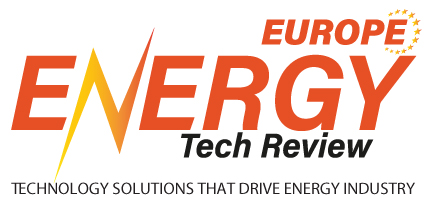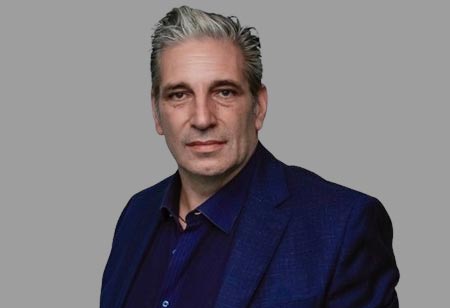Recently the Financial Times wrote a headline about a ban on new real estate developments in West London due to the congestion of electricity grid. This kind of hiccup in the energy transition highlights the importance of the power infrastructure and points out the need to focus on electrification as the most sustainable choice to reduce our impact on the planet.
Perhaps many people today are unaware that the model of electricity grids has changed radically and today it is completely different from the past as generation of variable and decentralized renewable power changed how we feed electrons in the networks and, at the same time, the way we use those electrons is changing as well. That’s why we should look at decarbonization and electrification as two major trends worldwide which put power grids at the center. The London example seen from the perspective of the developing world highlights the need to invest in power infrastructure with a long term perspective, especially in contexts such as the one in Brazil where population growth and urbanization are pushing the limits of existing infrastructure.
São Paulo in Brazil is home to more than 13 million people and Enel Grids is managing the power distribution grid in this large mega city where real estate developments are booming as the population rises steadily at over one million inhabitants every ten years. We currently manage power grids in four states in Brazil including Rio de Janeiro, Ceará and Goiás in addition to São Paulo.
What can the developing world teach us about technological leapfrog and digital power grids?
Electricity distribution operators have a strong local relationship with communities, that’s why making our grid truly sustainable is a great challenge. Working with the populations in projects like Hortas em Rede or other important initiatives, but above all in delivering our Net-Zero grid ambition. We have to “clean up” the emissions of our infrastructure to really make the most of renewable energy. And we also have to keep working to make our electricity grid open and participatory. We have to open up to new actors: electric vehicle recharge operators, prosumers (which are growing fast in Brazil), to the start up community, and to innovators.
A more participative, resilient and sustainable network. That is our vision which we call Grid Futurability.
• Prepare our grid so that it is reliable and transforming it to make it more robust and able to withstand climate change, ensuring we can deliver more electricity and do it in a different way.
• Reduce technical and non-technical losses, and also work with our partners and suppliers to have a sustainable grid from the point of view of inherent emissions as well as grid operations.
• Be ready for the electrified customer who will also become an electro-dependent customer actively participating in the grid either by prosumers or by placing their resources (solar panels, electric car battery, or their consumption curve) at the disposal of the grid so that the whole system can be managed more efficiently and effectively.
How is Enel Grids innovating in Brazil in collaboration with partners to achieve this vision?
Electric Truck with Air Basket is the most modern in the Brazilian market and has been introduced in Enel operations in 2022 cooperating with local companies. The main objective is to demonstrate operational fleet electrification improving the adoption of electric mobility and reducing the carbon dioxide emissions. Some of the benefits include low need of preventive and corrective maintenance; autonomy of 250 kilometers and the possibility of 12 uninterrupted working hours.
“Electrification as the most sustainable choice to reduce our impact on the planet.”
Mechanical Tree Trimming, a remote controlled equipment, is an innovative solution that allows the execution of the activity in a mechanized way where the employee works outside the risk zone, bringing safety and efficiency to the process.
Smart Metering and Gridspertise – Smart Meter project will substitute more than 8.5 million analog meters at the Enel Distribuição São Paulo. The project started in 2021, through a pilot R&D initiative, and there are more than 130 thousand customers with remote reading and billing function, and other features such as disconnection, reconnection, and distributed generation. Technology will soon be made available by Gridspertise to all other distribution operators in the country.
Innovative Primary Substations is a concept that refers to new ways of thinking in terms of design, materials, construction, impact, and configuration incorporating principles of reliability and sustainability with creating shared value and within a circular economy approach from its planning to the end of the asset’s life cycle. These substations will maximize their value for both the company and society, guaranteeing the supply of energy in the conditions required by the energy transition.
What global benefits can these local innovations unleash?
We are facing every day a great challenge in upgrading the services we provide to grid customers with digitalization, innovation, and the implementation of a single platform technological architecture, placing customer empathy at the center of our value chain.
Grid Blue Sky enables the integrated and efficient management of the networks across all Enel Grids geographies allowing for the first time to manage the global grid portfolio under a new unified model.
This approach is based on Grid Futurability as a solid industrial vision to managing our infrastructure and on Grid Blue Sky as the platform on which to build a new relationship with our customers enabling them to embrace electrification as the simplest, most reliable and sustainable energy choice. We know many things are still missing in the developing world such as economic sustainability of electrified products like electric vehicles, ease of use for example with recharging networks, lack of technological innovation to electrify many industries, etc. But nothing that is missing today will not arrive, so we are working hard to be prepared and learn from examples such as the London one to leapfrog into the electric future.












